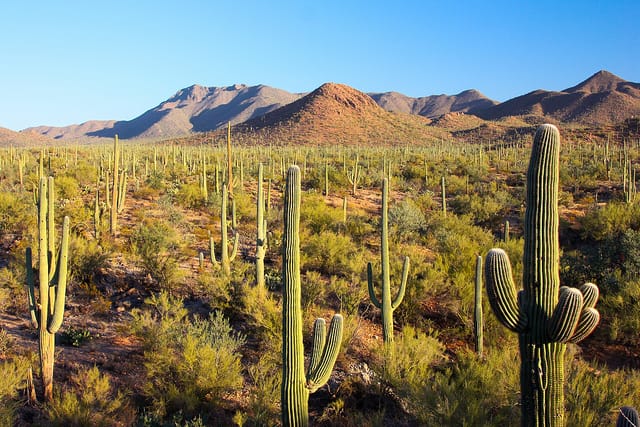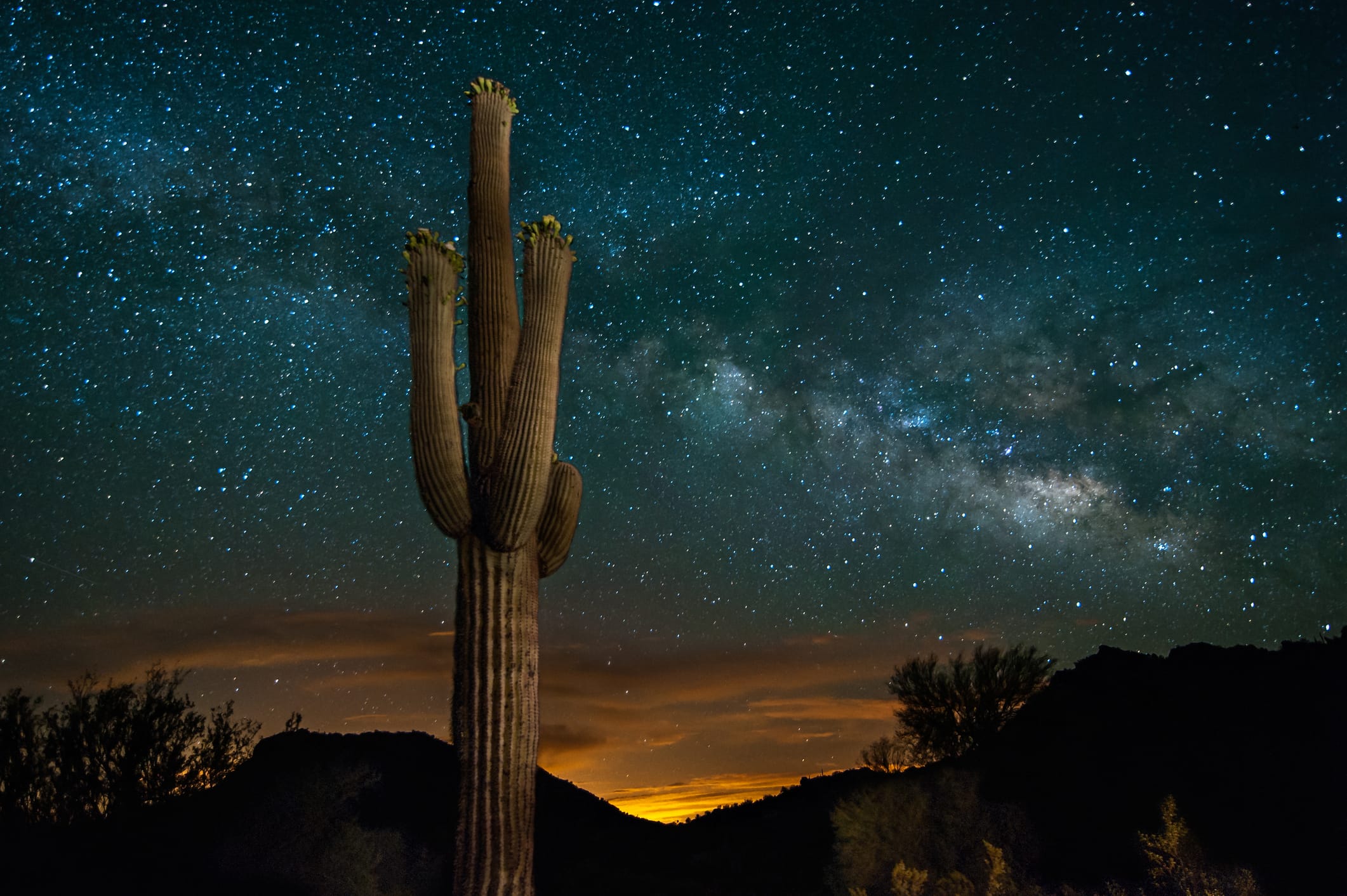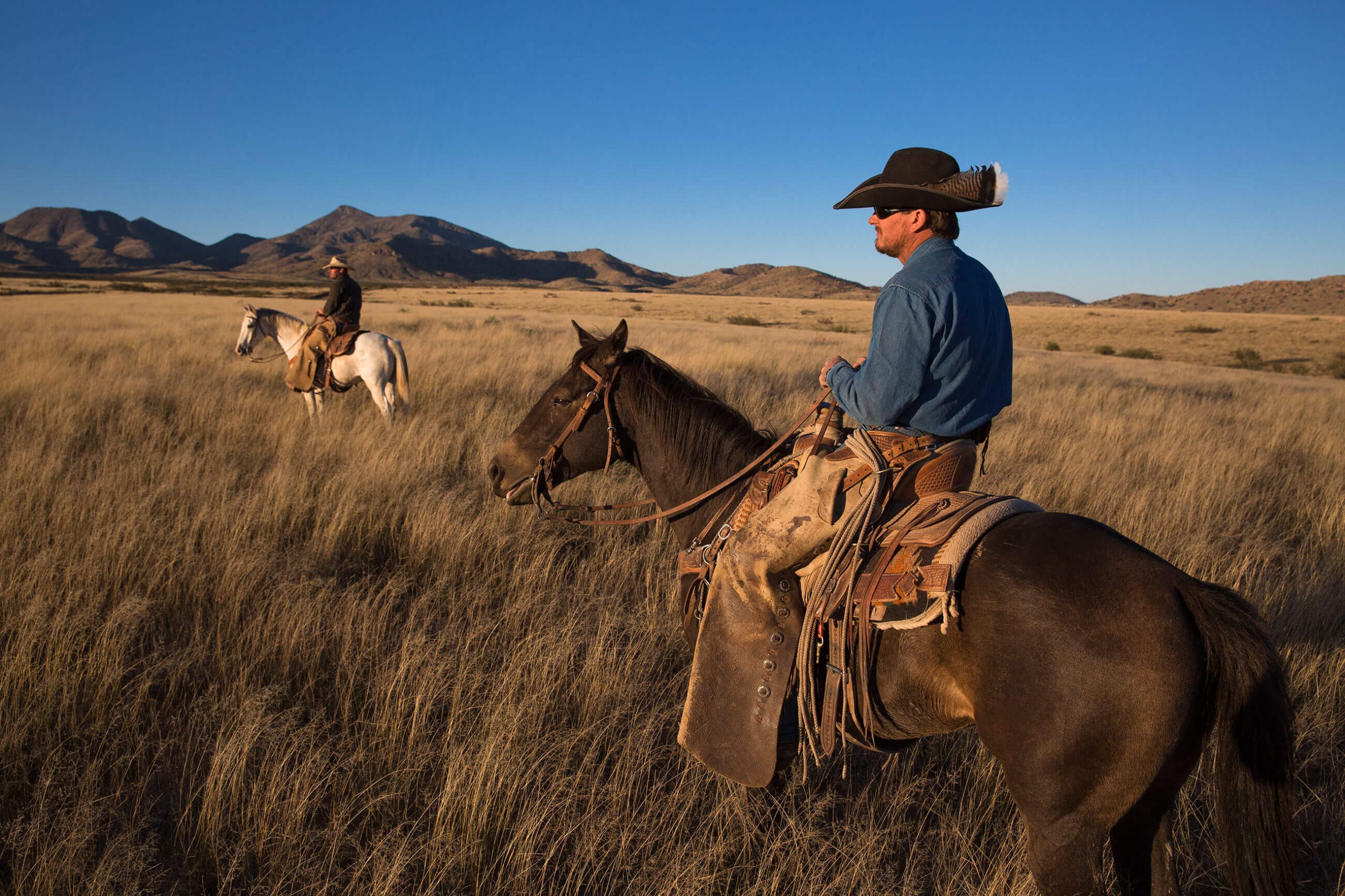
Sharpen your saguaro smarts with 10 cactus facts
Sharpen your saguaro smarts with 10 cactus facts
Next to the 10-gallon hat and the cowboy boot, there is no more widely recognized symbol of the Southwest than the giant saguaro cactus. And nowhere else in the region can you find more of these famous figures than Saguaro National Park, in the Sonoran Desert just outside of Tucson, Arizona.
Saguaro National Park covers about 150 square miles of mountains and desert scrub in two locations, one east of the city and one west of it. In the decades since the saguaro forests first gained federal protection in 1933, Tucson has grown from a sleepy desert town to the second-largest city in Arizona—making this outdoor escape increasingly important.
That’s why we’re so proud to announce an expansion of Saguaro National Park. This week, we transferred a scenic 84-acre property in the foothills of the Tucson to the National Park Service. The land links Sweetwater Preserve, a popular county-owned open space which we opened to the public in 2004, to the national park. This is the fourth time we’ve helped grow the national park in recent years.
The new addition to the park helps ensure that as Tucson grows, impacts like development and the spread of invasive species can be kept at bay—for the benefit of the saguaros, the animals that rely on them, and the millions of people that draw inspiration from the beautiful Sonoran Desert every year.
(Read more: Our work in Saguaro National Park)
To celebrate, we’re taking a closer look at the life and times of these very special cacti. (But not too close—those spines are pretty sharp.)
1. First things first: it’s pronounced “suh-wahr-oh.”
2. Like other desert plants, saguaros grow very slowly. But if conditions are right, they can become giants: the largest saguaro on record was nicknamed “the Grand One.” It was roughly 200 years old, 46 feet tall, and sported a dozen arms. This star saguaro was damaged in a wildfire in 2005, and toppled a few years later.
3. Despite providing the backdrop to old Westerns set everywhere from Colorado to Wyoming, giant saguaros grow naturally only in the northern reaches of the Sonoran Desert. Saguaros like it hot, so they aren’t typically found at elevations above 4,000 feet.
 Photo credit: Flickr user Joe Parks
Photo credit: Flickr user Joe Parks
4. The saguaro is adapted to make the most of every drop of rain. The cactus has a single deep taproot—the rest of its roots grow close to the surface of the ground in order to absorb as much water as possible before it evaporates. Saguaros are supported by a ribbed, woody skeleton, which expands like an accordion to allow the plant to retain moisture.
5. It’s against the law in Arizona to harm a saguaro cactus: landowners need a special permit for any construction that will affect a living plant.
6. But these tough laws are no help against climate change, which threatens to make the northern Sonora Desert too hot and dry for even the saguaro.
7. The cactus is also at risk from introduced species like buffelgrass, which elevates the risk of wildfire and threatens to crowd out young saguaros. The National Park Service and local volunteer groups seek and destroy buffelgrass infestations by pulling up the plant from its roots by hand.
8. Saguaros sport a fleeting crown of blossoms in late spring and early summer. The blooms open at night and live through the following afternoon—a short window for pollinators like bees and bats to reach the pollen within.
9. After the blooms close, they mature into hefty red fruit—a sweet desert delicacy and an important source of nutrition for desert tribes like the Tohono O’Odham. For thousands of years, Tohono O’Odham people have harvested saguaro fruit using a long pole made of the plant’s woody ribs.
10. Dozens of animal species depend on the saguaro. Birds, bats, insects, lizards, and mammals feast on their fruit, flowers, and flesh. Birds of prey and even some ground-dwelling animals like bobcats roost (carefully!) in the spiny cacti’s arms. Gila woodpeckers and gilded flickers carve out nest cavities in mature plants, and when they move on, other birds—like pygmy owls—move in to raise their young.
Got another cactus fact to share? Leave us a comment, or join us on Facebook!
One-third of Americans, including 28 million children, lack safe, easy access to a park within a 10-minute walk of home. Urge your senators to pass the Outdoors for All Act to create parks and enhance outdoor recreational opportunities before the congressional session ends!


Donate to become a member, and you’ll receive a subscription to Land&People magazine, our biannual publication featuring exclusive, inspiring stories about our work connecting everyone to the outdoors.
See how our supporters are helping us connect people to the outdoors across the country.











